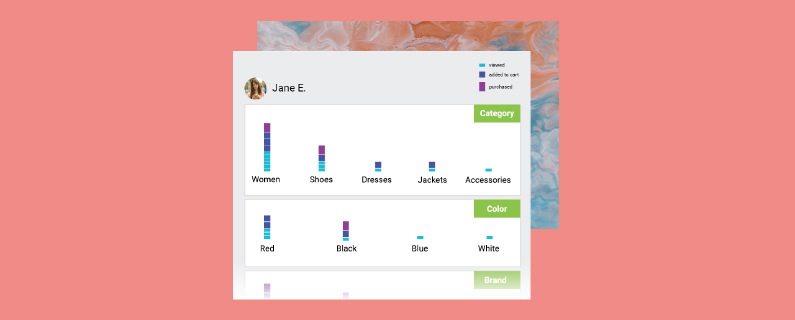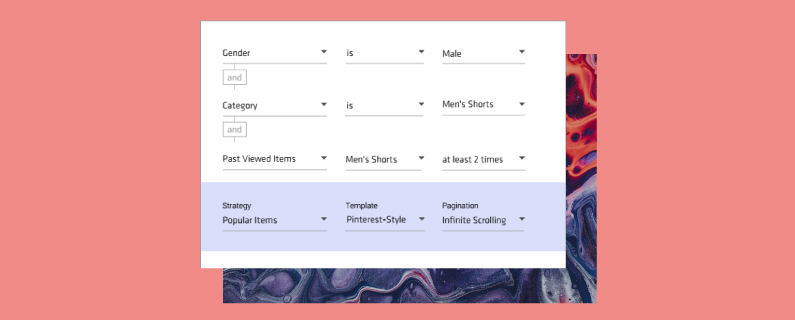How Deep Learning is Adding Predictive Personalization Prowess to User Affinity Profiling
Advanced RNN models are helping brands better understand and deliver on relationships between products and user behavior.
Summarize this articleHere’s what you need to know:
- Traditional affinity profiling relies on static weightings, historical user data, and independent interactions. While it is valuable for business, less-sophisticated models can miss important nuances in user behavior and sequential patterns, which limits prediction accuracy and personalized product recommendations.
- Deep learning in affinity profiling introduces dynamic weighings, sequential correlations, and broad user datasets. It uses RNNs with LSTM architecture to capture temporal dependencies and preferences, improving prediction accuracy through precise targeting.
- Benefits of advanced affinity profiling include increased customer loyalty and sales, more immersive and personalized digital experiences, plus improved efficiency and effectiveness of marketing campaigns.
There was a time not too long ago when the job of a marketer was to untangle the many possible correlations between users and their product interactions. As visitors became exposed to more and more brands, colors, styles, and other product attributes, this job became exceedingly difficult, resulting in a guessing game of testing different targeting conditions in hopes of determining the best possible experience for an audience or user with a particular affinity.
Not only were teams left missing the mark in accuracy, but their efforts weren’t scalable – with meaningful personalization becoming a moving target that was impossible to hit as individual preferences continued to evolve.
Advancements in technology changed all of that, with newfound abilities to automatically collect, analyze, and score every user interaction through affinity profiling for the delivery of more highly targeted experiences. This could be done via 1:1 affinity-based recommendations, the creation of affinity-based audiences, and more recently, an affinity-based allocation method that ensures the optimal variation for each user based on their real-time preferences.
The strides in efficiency and relevance have significantly benefited businesses, with companies from across industries reporting uplifts in average revenue per user (+15% for Pets Place), conversion rate (+40% for Tottenham Hotspur), and other KPIs – all stemming from its many helpful applications. Yet despite its impressive impact, the emergence of affinity profiling came with many opportunities to become more flexible in the future through machine learning.
Excitingly enough, the industry has now come upon that crossroad as affinity profiling steps out of its infancy and combines with recurrent neural network (RNN)-based deep learning models to uncover more complex correlations and better predict what the user will be interested in next.
In this post, we’ll get teams up to speed on the latest capabilities and dive into some of the nitty gritty details.
Deep learning’s role in the optimization of affinity profiling
Today, the main indicators that inform a user’s affinity profile revolve around:
- The type of engagement – This could be a product view, add-to-cart, purchase, etc., with greater weight typically placed on those with a higher intent level.
- With which product attributes – The different potential characteristics of an item, like whether it was of a certain color, brand, gender, style, price range, and so forth.
- At what window in time – The time that has passed since the specific interaction, with recency playing a larger role in shaping the user’s current affinity.
With a traditional affinity algorithm, once defined, the same hard-coded formula with a static weighting system is applied to all users and scenarios. However, if you considered an interaction with a recent timestamp, which carries a higher weight over one that occurred further back in time, you can see how easily important nuances in user behavior could be missed.
The assumptions affinity modeling has made up until this point are also only based on the historical interactions of one particular user (vs being trained against a larger volume of user data), and no correlations are currently being made between the sequence of events and a desired outcome.
This is where deep learning comes into play, optimizing affinity profiling for increased predictive power in the following ways:
Static to dynamics core weighting
The sophisticated nature of deep learning’s neural network architecture allows affinity profiling to become truly “smart” as it learns and adapts the variables used in score calculation with each training iteration. This move from a static to dynamic weighting system captures the subtle intricacies of user behavior required to deliver precisely targeted experiences.
Concurrent to sequential correlations
When combined with deep learning, an affinity algorithm can not only be trained on the sum of different independent user interactions (model input) but also the outcome target event (model output) and sequencing that takes place between the two. This means new correlations become possible, e.g. a browsing sequence followed by a product purchase, with a higher coverage of attributes able to better predict the next best experience to serve.
Narrow to broad user datasets
Deep learning has the ability to process extensive volumes of data, which means affinity profiling can go beyond looking at just one user’s activity, incorporating the rich tapestry of behavior seen across a brand’s site traffic. Tapping into this broader dataset bolsters the comprehensiveness and accuracy of predictions, which can include and learn from unseen attributes in a user’s personal history.
More on the nitty-gritty data science
Interested in learning more about the data science behind all of these advancements?
Here are some of the forces at play:
A recurrent neural network (RNN) model
Based on a long short-term memory (LSTM) architecture, this type of RNN (unlike traditional feedforward neural networks) is ideal for tasks involving time-series data like user behavior analysis and prediction based on its ability to capture both short- and long-range dependencies and sequential patterns.
Its distinct strength lies in processing interaction sequences while retaining a memory of past interactions, which is crucial for recognizing a user’s gradual shift in preferences or the emergence of seasonal trends. This is especially important for activities such as optimizing product recommendations, predicting churn, and tailoring marketing campaigns.
The efficiency of model training and evaluation
The model is only as good as the training it receives. Sufficient training is a multi-faceted process to decode and accurately predict user behavior, including:
- Segmentation of training dataset into date ranges – Effectively distinguishing between a historical period spanning several months and a target period that encompasses a few weeks, culminating in the user’s pivotal target event.
- Preprocessing and streamlining of the dataset – Training efficiency is enhanced by pruning redundant interactions as well as those that are less significant or further back in time to prioritize data that carries greater meaning for the user’s current affinity.
- User insight generation via target events and vectors – The most significant product interaction within a defined period is selected as the user’s target event, with each relevant affinity attribute translating into a separate target vector, helping to understand user preferences.
- Rigorous evaluation of accuracy, coverage, and success – Independent of the training data, a meticulous comparison is drawn between the predicted affinity profile and the attribute values tied to the target event, shedding light on the model’s coverage and its ability to align predictions with actual user interactions and preferences.
The culmination of this comprehensive process is the output of a new and sophisticated model: a user affinity profile with predictions that are more accurate than ever before.
A whole new world of predictive affinity profiling
Advancements in machine learning, natural language processing, and deep learning have ushered in a transformative period in affinity profiling. Personalization systems and the teams who rely on them will now be able to understand their user’s preferences and behaviors with unprecedented predictive precision, leading to improved customer loyalty, increased sales, and a more immersive digital landscape.



















